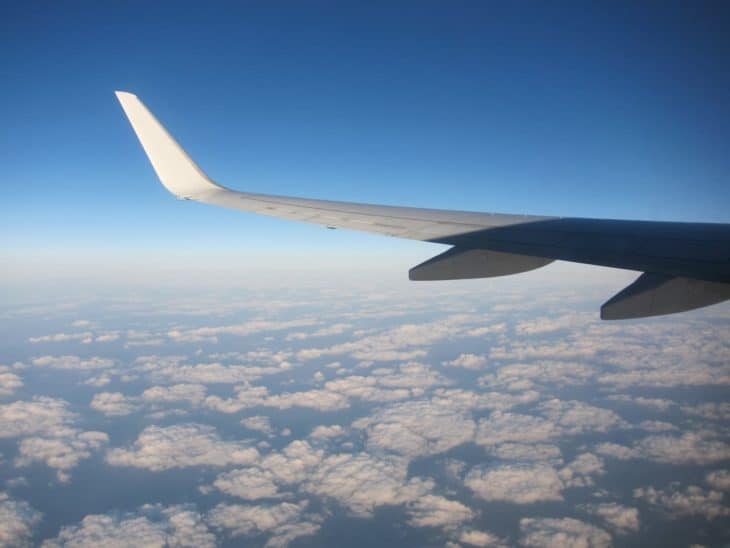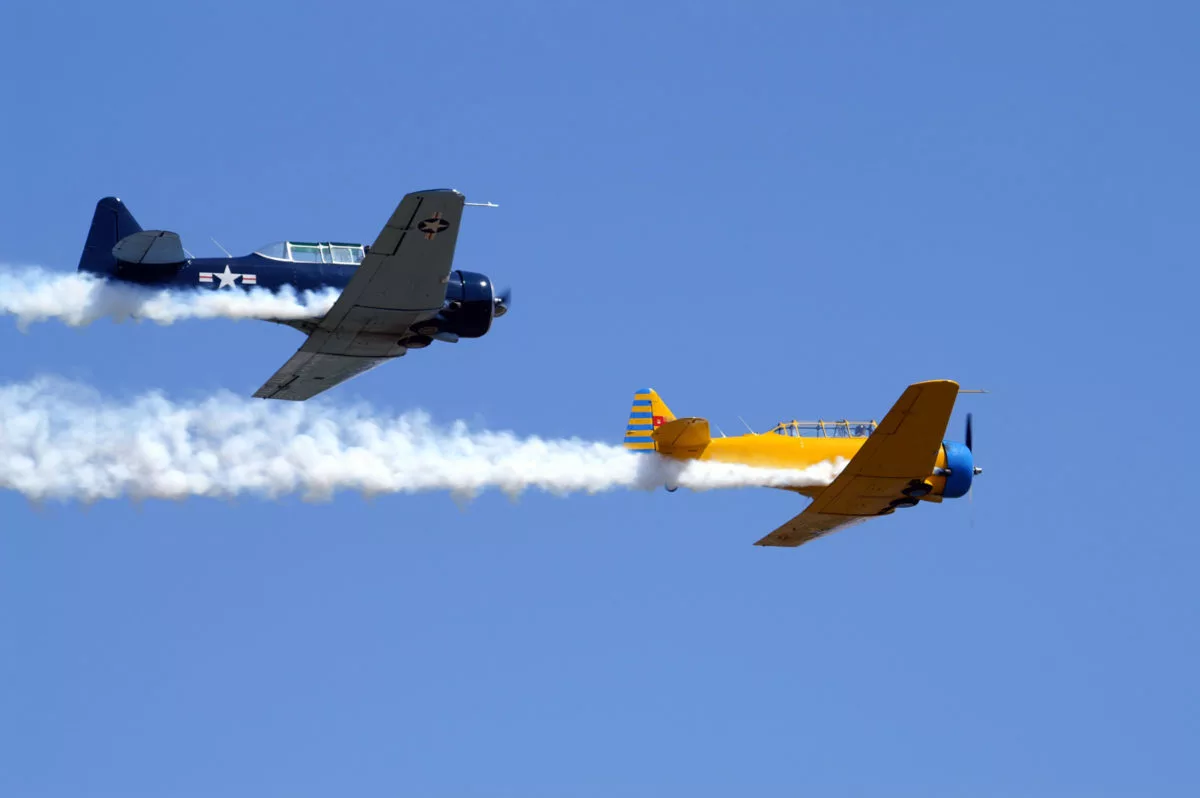How High Do Airplanes Fly? Unveiling The Sky's Limits
Have you ever looked up at the sky and wondered just how high airplanes fly? It's a question that's been on the minds of curious souls for decades. From the earliest days of aviation to the modern era of supersonic jets, humanity has been pushing the boundaries of what's possible in the skies. Today, we're diving deep into the science, technology, and facts behind the altitudes airplanes reach. So buckle up, because we’re about to take off on an adventure!
Picture this: you're sitting in your seat, staring out the window as the clouds rush by. But have you ever stopped to think about just how far above the ground you really are? Airplanes don’t just soar through the skies for fun—they’re carefully engineered to fly at specific altitudes to ensure safety, efficiency, and comfort. And trust me, there’s a lot more to it than meets the eye.
Whether you’re a frequent flyer or someone who’s just curious about aviation, understanding how high airplanes fly can give you a whole new appreciation for the marvels of modern travel. So let’s dive into the nitty-gritty and uncover the secrets behind those incredible heights!
- Neu Selo Gori A Baba Se Ceslja Alle Episoden Infos
- Entschuldigung Keine Ergebnisse Gefunden Tipps Zur Suche
The Basics: What Determines How High Airplanes Fly?
Alright, so you know airplanes fly high, but what exactly determines their altitude? There’s a lot more to it than just throwing a plane into the air and seeing where it lands. Factors like air pressure, fuel efficiency, weather conditions, and even the type of aircraft all play a role in deciding just how high planes can go.
Why Altitude Matters
Think of altitude as the sweet spot where planes can perform at their best. At higher altitudes, the air is thinner, which reduces drag and allows planes to travel faster and more efficiently. Plus, flying higher means avoiding a lot of the nasty weather down below, like thunderstorms and turbulence. It’s like finding the Goldilocks zone of the sky—just right for smooth sailing.
Types of Aircraft and Their Altitudes
Not all planes are created equal. Commercial jets, for example, typically cruise at around 35,000 to 40,000 feet. But private jets and military aircraft can go even higher, sometimes reaching altitudes of 50,000 feet or more. And then there are the record-breakers, like the SR-71 Blackbird, which can soar up to 85,000 feet. That’s higher than most people can even imagine!
- Wochenende Gerettet Lustige Sprche Fr Dich Tipps
- Ltere Frauen Spa Entdecke Heie Milfs Mehr Neue Videos
The Science Behind High Altitude Flight
Now, let’s get into the nitty-gritty of the science behind how airplanes manage to fly so high. It’s not just about throwing engines into the sky and hoping for the best. There’s a lot of physics, engineering, and innovation that goes into making high-altitude flight possible.
The Role of Air Pressure
At higher altitudes, the air pressure drops significantly. This might sound like a bad thing, but it’s actually a good one for airplanes. Thinner air means less resistance, which translates to faster speeds and lower fuel consumption. Of course, there’s a catch—humans can’t survive in low-pressure environments, which is why cabins are pressurized to keep passengers comfortable.
How Engines Handle the Heights
Jet engines are designed to operate efficiently at high altitudes, where the air is cooler and less dense. This allows them to produce more thrust with less fuel, making long-haul flights both feasible and economical. But these engines are also incredibly versatile, capable of adjusting to changing conditions as the plane climbs or descends.
Maximum Altitude Limits
So, how high can airplanes really fly? While commercial jets typically cruise at around 35,000 to 40,000 feet, there are limits to how high they can go. These limits are determined by a variety of factors, including engine performance, fuel efficiency, and structural integrity.
Commercial Jets: The Sweet Spot
Most commercial airplanes operate in what’s known as the "cruise altitude" range, which is usually between 30,000 and 40,000 feet. This range provides the perfect balance of speed, efficiency, and safety. Flying too low would mean battling more air resistance, while flying too high could strain the engines and compromise passenger comfort.
Private Jets: Pushing the Limits
Private jets, on the other hand, are built to fly higher and faster than their commercial counterparts. Many can reach altitudes of up to 51,000 feet, allowing them to avoid traffic and turbulence. This makes for a smoother and more luxurious flight experience, but it also comes at a cost—both financially and in terms of fuel consumption.
Record-Breaking Aircraft
Now, let’s talk about the record-breakers—the planes that have pushed the boundaries of altitude and speed. From experimental aircraft to military marvels, these machines have taken flight to new heights.
The SR-71 Blackbird: The King of the Skies
When it comes to high-altitude flight, the SR-71 Blackbird is in a league of its own. This supersonic spy plane can reach altitudes of up to 85,000 feet, making it one of the highest-flying aircraft ever built. And with a top speed of over 2,000 mph, it’s also one of the fastest. Talk about breaking records!
The Concorde: Supersonic Elegance
While not quite as high-flying as the SR-71, the Concorde was another game-changer in the world of aviation. This supersonic passenger jet could cruise at altitudes of up to 60,000 feet, allowing it to avoid most weather systems and reach its destinations in record time. Unfortunately, the Concorde is no longer in service, but its legacy lives on as a testament to human ingenuity.
Why Do Airplanes Fly So High?
By now, you might be wondering why airplanes even bother flying so high in the first place. After all, couldn’t they just stay closer to the ground and save themselves the trouble? Well, as it turns out, there are some pretty compelling reasons for flying at high altitudes.
Efficiency and Economy
At higher altitudes, airplanes can travel faster and burn less fuel. This makes long-haul flights more economical and sustainable, which is a win-win for both airlines and passengers. Plus, flying high allows planes to avoid traffic congestion in the lower skies, making for smoother and more efficient journeys.
Safety and Comfort
Another big reason for flying high is safety. By staying above the clouds and bad weather, airplanes can ensure a smoother and more comfortable ride for passengers. And let’s not forget about the stunning views—there’s nothing quite like gazing down at the world from 35,000 feet up!
Challenges of High-Altitude Flight
Of course, flying so high isn’t without its challenges. From extreme temperatures to thin air, there are plenty of obstacles that pilots and engineers have to overcome to make high-altitude flight possible.
Temperature Extremes
At high altitudes, temperatures can plummet to as low as -60 degrees Celsius. This poses a significant challenge for both the aircraft and its systems, which must be designed to withstand these extreme conditions. But don’t worry—modern planes are built to handle it all, from icy winds to scorching heat.
Human Factors
While planes can handle the altitude, humans can’t. That’s why cabins are pressurized to keep passengers comfortable and safe. Without this pressurization, the low air pressure at high altitudes would make it impossible for humans to breathe, let alone enjoy the flight.
How High Can Commercial Airplanes Go?
So, to recap, how high can commercial airplanes really fly? The answer lies somewhere between 30,000 and 40,000 feet, depending on the aircraft and its mission. But as we’ve seen, there are plenty of factors that influence this range, from engine performance to passenger comfort.
And while commercial jets may not be able to reach the dizzying heights of military aircraft or experimental planes, they still manage to deliver millions of passengers safely and efficiently every day. That’s no small feat, and it’s a testament to the incredible advancements in aviation technology over the years.
Future of High-Altitude Flight
Looking ahead, the future of high-altitude flight looks brighter than ever. With advancements in materials, engines, and technology, we’re likely to see even more efficient and capable aircraft in the years to come. And who knows—maybe one day we’ll all be flying at altitudes that seem impossible today.
But for now, we’ll have to settle for the incredible heights that modern airplanes can already reach. So the next time you’re on a flight, take a moment to appreciate just how high you really are—and the incredible engineering that makes it all possible.
Conclusion: Soaring to New Heights
And there you have it—the ins and outs of how high airplanes fly. From the basics of altitude to the science behind high-altitude flight, we’ve covered it all. Whether you’re a frequent flyer or just someone who’s curious about aviation, understanding how airplanes reach those incredible heights can give you a whole new appreciation for the marvels of modern travel.
So the next time you’re staring out the window at 35,000 feet, take a moment to marvel at the engineering and innovation that got you there. And if you’ve enjoyed this article, why not share it with your friends and family? Or better yet, leave a comment and let us know what you think. After all, the sky’s the limit when it comes to knowledge—and curiosity!
Table of Contents
The Basics: What Determines How High Airplanes Fly?
The Science Behind High Altitude Flight
Challenges of High-Altitude Flight
How High Can Commercial Airplanes Go?
Future of High-Altitude Flight
Conclusion: Soaring to New Heights
- Oishinbo Dortmund Sushi Cocktails Mehr Entdecke Es Jetzt
- Seoul Chicken Entdecke Das Beste Koreanische Hhnchen

Thrilling Heights How High Do Airplanes Fly Travel Noire

How High In The Sky Do Airplanes Fly (& Why?!) Aero Corner

How High Do Airplanes Fly? Wings Over Camarillo